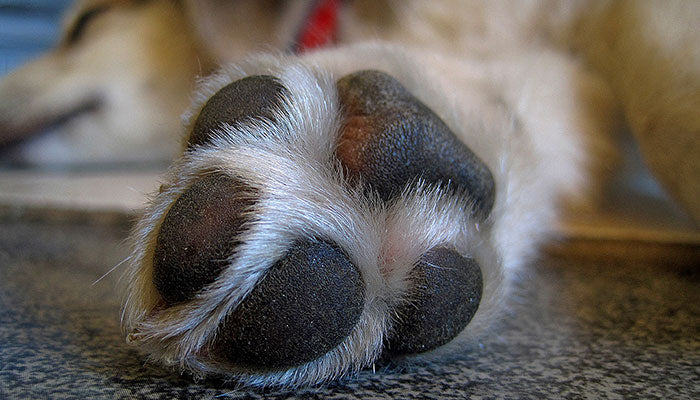Veronica DeLisle | July 9 2018
Your pup’s paws may be tough, but they aren’t invincible. Dog owners often forget look over their pup’s feet when thinking about dog wellness, but they need some extra attention now and again too! Extreme weather and daily wear and tear can certainly take its toll on your dog’s paws, so here are some tips on how to keep their feet happy and healthy!
Changing Weather
Dog paws are made of skin, bone, tendons and ligaments (amongst other things), meaning they can hold up against most conditions. But sometimes the weather gets too hot or too cold, allowing their paws to be susceptible to damage. When the summer months hit, the streets become unbearably hot and can lead to blisters on your dog’s pads. To avoid this, take your dog out for walks early in the morning before the sun can heat up the streets, or later in the day when they have cooled down. When winter rolls around, take shorter walks to prevent frostbite and other cold weather damage. If you think your dog will tolerate them, consider buying booties for your dog’s feet to keep them warm and out of harm’s way in colder months.
Picking Up Stragglers
Thorns and twigs can easily get lodged into your dog’s feet, so be sure to keep an eye on them after you get home. If they seem to be limping, check their foot to see if there’s something stuck in their pad or between their toes. They could even pick up a tick on their paw as ticks look for small, dark crevices to hide in. Check out Sleepy Cotton’s article “Tick Checking 101” if you do find one of these critters to learn how to remove it properly.
“Ruff”, Dry Pads
If your dog is an inside-only dweller, their paws might not be ready for a big outside adventure. Dog paws build resistance the more they are faced with hard, uneven surfaces such as sidewalks or gravel. Before they get there however, they might have sensitive paws that need a little care. Rubbing some vitamin E cream or Sleepy Cotton’s Melting Balm into their pad can help reduce the pain and moisturize cracked pads. Be sure to rub it in well so that your pup can’t lick it off!
Licking, Chewing or Biting Paws
If you notice that your dog is excessively licking at one of their paws, check and make sure there’s nothing stuck in there. If you can’t find anything, your dog may be licking out of boredom or stress. Try and figure out what might be going on to lead them to do this; excessive licking can damage the tissues in their pads or delay an healing that may need to be done. If your dog is chewing or biting at a paw, they may be suffering from an inhalant allergy and should be taken to their vet right away. Always try and check your dog’s paws after long adventures to make sure they haven’t picked up any scratches, thorns, or other harmful things along the way!

